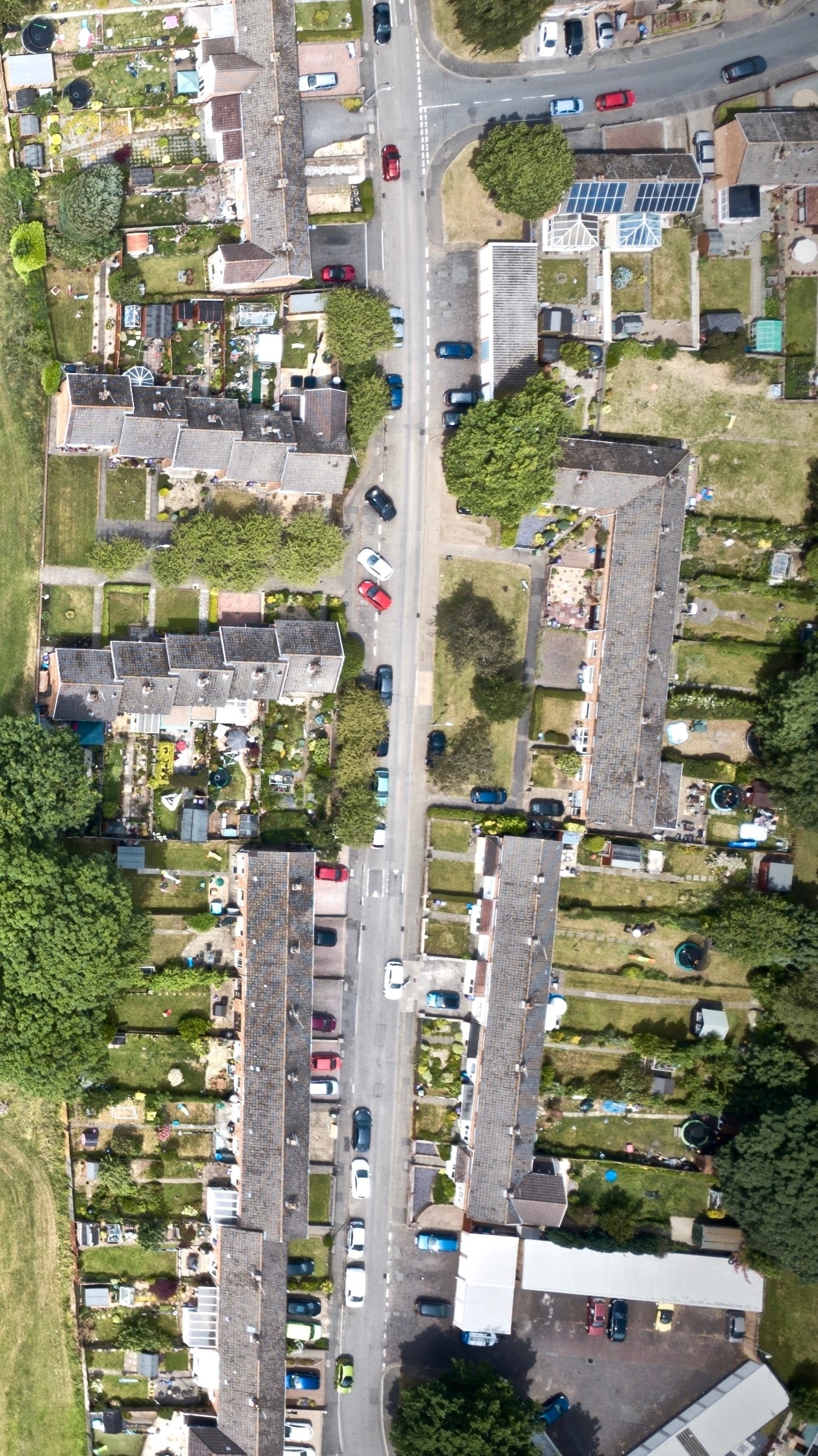
During the past year, Property Journal has covered an array of topics relating to the work of RICS members – from commercial challenges faced by agents, landlords and investors navigating the post-pandemic real-estate market to the growing demand for policy and infrastructure to support sustainability initiatives and climate change mitigation.
To round off 2022, we've hand-picked a selection of this year's articles on housing, inclusive environments, planning and development, sustainability, technology, valuation, personal property, and investment and finance.
Why efforts to ensure decent housing are being renewed
The UK's housing situation has remained on the national agenda. Considering imminent changes to the Decent Homes Standard, Richard Hand FRICS of Ridge and Partners LLP wrote an article for us in October summarising the existing standard, and exploring the proposed reforms and their potential impact.
The standard has set the minimum requirements for social housing in England and Northern Ireland since the early 2000s. But with landlords' budgets under increasing pressure and their concerns over compliance diminishing, the UK government published a consultation in September seeking views on the introduction and enforcement of a refreshed standard.
The revised version will also apply to the private rented sector in England, given that the English Housing Survey has found that 21% of private rented homes fail to meet the standard while 12% present a serious hazard – significantly more than in social housing.
'In the context of skills shortages, a projected recession and a cost of living crisis, what additional resources and grants will be made available to help landlords?'
Redressing racism to create inclusive environments
Diversity, equity and inclusion also continue to be priorities for our coverage of the housing sector – and indeed across RICS. So we wanted to address research showing that social discrimination and racism in the UK still have a direct effect on housing conditions, the built environment and diversity in the real-estate profession.
Property Journal therefore invited Dominique Staindl and Maria Wiedner FRICS from Real Estate Women to respond to the issue. The organisation had published its Manifesto for an anti-racist built environment in September 2020, and their article this May summarised the effects of racism in real estate, discussing what action can be taken to make the built environment profession more equitable.
Recognising that the discussion is no longer about preventing damage but about actively improving the situation, they advocate greater inclusion of decision-makers from minority groups to create spaces that support individuals from ethnic minority communities.
'We need real-estate professions to come together to tackle the racism inherent in the built environment and in companies themselves'
New lab offers planning and development insights

Staying with the subject of society's relationship with real estate, we covered University College London's (UCL's) unique new, purpose-built facility that explores the way people interact with their surroundings.
The Person–Environment–Activity Research Laboratory (PEARL) in Dagenham, east London, forms part of the UK Collaboratorium for Research on Infrastructure and Cities, an integrated research project dedicated to address complex infrastructure challenges. PEARL's flexible facilities enable researchers to explore the different ways that people – for example wheelchair users or people with dementia – may move around a space. Meanwhile, the development itself is also supporting much-needed regeneration in the area.
During the spring, former Property Journal editor Claudia Conway visited the site to find out more about the building and the research being conducted there.
'PEARL brings together sustainability, community focus, people-centred workspace and specialist research in a novel way'
Pioneering office refit exemplifies sustainability
Outside the lab, we were also pleased to report on a practical example of real estate with a positive impact.
Given that sustainability is no longer something that just looks good for a business but directly affects the value of a building or investment portfolio, it is being taken more seriously. Building reuse is one way to reduce the construction industry's carbon footprint, with technology and innovative design methods helping minimise new building work, so in July Arup's Mike Thomson provided us with a case study of the award-winning retrofit of 1 Finsbury Avenue in London.
He outlined the challenges faced in ensuring the building could be a showcase for lower-carbon redevelopment. The principles of the circular economy informed the design, which aimed to reuse the existing building's structure wherever possible.
'The 1980s building has been transformed while retaining most of the most carbon-intensive components'
Using data to better certify energy performance
Another initiative supporting sustainability – by enabling more accurate recording of buildings' energy performance – are the UK's unique property reference numbers (UPRNs). Managed by GeoPlace and assigned by Ordnance Survey and local authorities, these numbers ensure that organisations in numerous sectors can refer to the same object or property.
In November 2021, the Department for Levelling Up, Housing and Communities announced that UPRNs would be incorporated into energy performance certificates (EPCs), to improve the reliability of the EPC register.
To determine the potential impact of that announcement on surveyors and property professionals, Louise Weale of Ordnance Survey wrote for us in April to explain the wider benefits, which as well as more accurate EPCs include better forecasting of fire risk and improving the condition of rented properties.
'By embedding the UPRN in processes, linking and enhancing data becomes more efficient'
New standard reviews evidence on knotweed

Environmental impacts of a much more local nature were the subject of an article in March, when the new RICS professional standard Japanese knotweed and residential property came into effect.
As well as addressing concerns raised since the publication of its predecessor – the Japanese knotweed and residential property information paper – the new document introduces an assessment process for valuers and surveyors to apply when the plant is discovered during site inspections, and offers a straightforward categorisation of infestations.
Given the significance of these developments for the valuation community and the property sector more broadly, the standard's technical author Philip Santo wrote for us to offer further insight.
'The change in the assessment process to a three-metre distance beyond a boundary does not imply any greater inspection requirement'
Valuing personal property in a changing market
The practice of art valuation is also changing, and has been transformed by increased online sales, a shifting relationship between galleries and auctions, and the rise of crypto art such as non-fungible tokens (NFTs). In 2021, for instance, Christie's in New York sold NFT Everydays – The First 5000 Days for $69m, marking the first time that a major house put a purely digital artwork up for auction.
Valuers must keep up to date with such changes, evaluating new media and familiarising themselves with the latest methods for promoting and selling artwork. So we asked art valuation expert Courtney Ahlstrom Christy to assess what these changes will mean, and the challenges they will pose for valuers, in her July article.
'Professionals must stay abreast of technology – both as a medium for art and as a mode of selling it'
Legislation enables real-estate investment scrutiny
Finally, Property Journal has been keeping an eye on legislative developments throughout the year. One such was the coming into force in January 2022 of the National Security and Investment Act 2021.
This introduced new regulations for overseas and domestic investors, and has allowed the UK government to examine investments where there are national security concerns. The act has a number of implications for real estate, in particular land deals involving properties near national infrastructure or government buildings, and the introduction of mandatory and voluntary notification regimes.
To help investors better understand these changes, we asked Jane Dockeray and Ingrid Stables of law firm Hogan Lovells in September to outline the act's effects on the sector in the six months after its introduction.
'Figures suggest that the new regime is – at least initially – proving to be less burdensome than anticipated'
Publication of Property Journal resumes in the new year, when we will continue our coverage of these and other topics, including the 2023 revaluation of properties for business rates, smart buildings and return on investment, sustainable retirement communities, the evolution of green leases and what's next for the build-to-rent sector among others.
